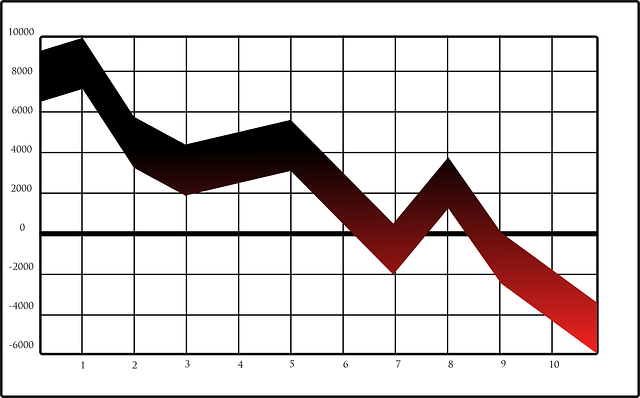Terpene Profile Charts are powerful visual tools that provide insights into aromatic organic compounds found in plants, offering consumers and professionals a way to make informed decisions about products for aromatherapy, wellness, and various industries. These charts break down terpene compositions, enabling quality control, product comparison, and the identification of specific benefits like stress relief or anti-inflammatory effects. With increasing consumer demand for transparency, these charts demystify terpenes, enhancing product selection and ensuring consistent, effective results in essential oils, cosmetics, healthcare, and more. They drive innovation across sectors, unlocking the potential of terpenes for antimicrobial, antiviral, and therapeutic applications.
“Terpenes, nature’s aromatic compounds, are the unsung heroes behind the scents and flavors we love. Beyond their sensory appeal, terpenes offer a wealth of benefits, from enhancing product quality to promising health advantages. This article delves into the multifaceted world of terpenes, exploring their role in various industries through key sections like Terpene Profile Charts (a visual guide to identification), Unlocking Secrets of Quality Control, and Consumer Awareness. We also gaze into future trends, highlighting innovations in terpene research and product development, all while emphasizing the significance of clear labeling for informed consumer choices.”
Understanding Terpenes: The Building Blocks of Aromas and Benefits

Terpenes are a diverse group of aromatic compounds that play a crucial role in shaping the scent and flavor profiles of various plants, including many used in everyday products. Often referred to as the “building blocks of aromas,” they contribute significantly to the unique character of essential oils, herbs, spices, and even certain medications. A Terpene Profile Chart can provide an insightful look at these chemical components and their corresponding benefits.
These organic compounds are responsible for the familiar scents we encounter in nature, from the fresh scent of pine trees to the sweet fragrance of lavender. In many cases, terpenes also offer therapeutic properties. For instance, some terpenes have been linked to stress relief, improved sleep, and anti-inflammatory effects. Understanding their profiles can help consumers make informed choices when selecting products that align with their desired aromatherapeutic benefits.
Terpene Profile Charts: A Visual Guide to Compound Identification

Terpene profile charts offer a powerful visual tool for identifying and understanding terpene compounds in various products, from essential oils to cannabis strains. These charts provide a detailed breakdown of the unique chemical composition of different terpenes, allowing users to easily compare and contrast their properties. By visualizing the specific profiles, manufacturers, researchers, and consumers can make informed decisions about product selection, quality control, and desired effects.
Each Terpene Profile Chart typically includes key information such as terpene names, concentrations, and associated aromas or potential therapeutic benefits. This visual representation enables quick identification of dominant terpenes, which significantly impacts the overall scent, flavor, and even potential health advantages of a product. With easy-to-understand graphics, these charts democratize access to complex terpene data, empowering individuals to explore and appreciate the intricate world of aromatic compounds in their everyday products.
Unlocking the Secrets: How Terpene Profiles Enhance Product Quality Control

Unlocking the Secrets: How Terpene Profiles Enhance Product Quality Control
In today’s competitive market, ensuring product quality and consistency is paramount. One often overlooked yet powerful tool in achieving this is the terpene profile chart. Terpenes, organic compounds produced by plants, not only contribute to the unique aroma and flavor profiles of various products but also serve as a quality control indicator. By meticulously analyzing and understanding terpene compositions, manufacturers can unlock vital insights into product consistency, safety, and efficacy.
A comprehensive terpene profile chart provides a detailed breakdown of specific terpenes present in a given product, their relative concentrations, and corresponding effects. This data enables manufacturers to establish benchmarks for quality assurance, facilitating rapid identification of any variations or inconsistencies across batches. Moreover, knowledge of terpene profiles empowers manufacturers to make informed decisions regarding formulation adjustments, ensuring that products maintain their desired characteristics throughout production runs and meet stringent quality standards.
Industrial Applications: Exploring Terpenes in Diverse Industries

Terpenes, with their diverse aromas and potential therapeutic benefits, have found applications far beyond the realm of essential oils and aromatherapy. In industrial settings, these organic compounds are making waves in various sectors, thanks to their unique properties as shown in Terpene Profile Charts. From construction materials that incorporate terpene-infused resins for enhanced durability to advanced coatings with terpene additives for improved resistance to weathering, the versatility of terpenes is being tapped into.
In manufacturing, certain terpenes exhibit natural antimicrobial and antiviral properties, leading to their integration into hygiene products like hand sanitizers and surface disinfectants. The automotive industry has also embraced terpenes for their potential in developing eco-friendly solvents and lubricants that reduce environmental impact without compromising performance. This exploration of terpenes across industries underscores the compound’s significant role in driving innovation and sustainability in diverse sectors.
Health and Wellness: Terpenes' Role in Natural Remedies and Supplements

Terpenes, known for their fragrant properties in plants, have gained significant attention in the health and wellness industry as active ingredients in natural remedies and dietary supplements. These organic compounds, often found in essential oils, play a crucial role in various therapeutic applications. Many terpenes possess anti-inflammatory, analgesic, and antimicrobial effects, making them valuable components in managing pain, reducing stress, and supporting immune function.
A Terpene Profile Chart is a useful tool for understanding the unique characteristics of different terpene types. It showcases their chemical structures, aromatic profiles, potential therapeutic benefits, and interactions with other compounds. By analyzing these charts, healthcare professionals and consumers can make informed choices when selecting terpenes for specific wellness needs. This approach ensures the optimal utilization of natural remedies, highlighting the intricate relationship between plants’ chemical profiles and human health.
Consumer Awareness: The Importance of Clear Labeling for Terpene Content

In today’s market, consumers are becoming increasingly aware and discerning about the products they purchase, especially when it comes to health and wellness items. This shift in consumer behavior highlights the critical need for clear and accurate labeling, particularly for products containing terpenes. Terpenes, known for their aromatic properties, are now commonly found in various goods, from essential oils and aromatherapy products to dietary supplements and even cosmetics.
A Terpene Profile Chart is a powerful tool that can demystify these organic compounds for buyers. By providing detailed information about the types and amounts of terpenes present in a product, it empowers consumers to make informed decisions. This transparency allows users to align their choices with specific wellness goals or preferences, ensuring they receive the desired effects from terpene-rich products.
Future Trends: Innovations in Terpene Research and Product Development

The future of terpenes in product development is a fascinating and rapidly evolving landscape. Researchers are increasingly exploring the potential of terpenes beyond their aromatic properties, uncovering a wealth of therapeutic benefits. Innovations in terpene extraction and identification techniques have led to the creation of detailed Terpene Profile Charts, offering a comprehensive overview of specific compounds’ effects on the body. This data-driven approach allows for precise formulation and customization of products across various industries.
One prominent trend is the integration of terpenes into healthcare and wellness solutions. Studies suggest certain terpenes possess anti-inflammatory, analgesic, and anxiolytic properties, making them valuable additions to pharmaceuticals and natural remedies. As such, we can expect to see more terpene-enriched products targeting stress relief, pain management, and immune support. Additionally, the beauty and personal care sectors are embracing terpenes for their potential skin benefits, leading to the development of advanced skincare formulations that harness nature’s power.
